Some of you are old enough to remember when the Reader’s Digest was a common fixture in American households. The Reader’s Digest was published monthly and mailed to its subscribers. The publication still exists but because of the Internet, social media, and the like, it is no longer as popular as it once was.

Figure 1. A sampling of Reader’s Digest covers.
The publication was started in 1922 by DeWitt Wallace who was recuperating from shrapnel wounds received in World War I. Wallace would hunt for articles in various popular magazines he thought the readers would like to read, rewrite or condense them, and reprint the articles in the Reader’s Digest.
The magazine’s format typically consisted of 31 articles per issue (one per day), along with an “Increase your Word Power” vocabulary quiz, a page of “Amusing Anecdotes” and “Personal Glimpses”, and two features of funny stories entitled “Humor in Uniform” and “Life in these United States.”
Enter the Farmer’s Digest
The popularity of the Reader’s Digest might have been the impetus for a similar publication for farmers – the Farmer’s Digest. In May of 1937 the Farmer’s Digest started and continued until January of 2005.
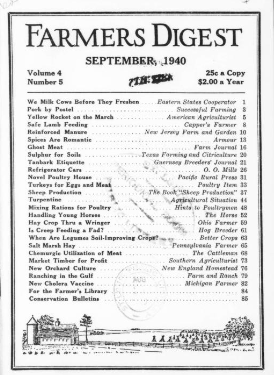
Figure 2. The June 1940 issue of the Farmers Digest. Note: Over the years the title was sometimes spelled with an apostrophe (Farmer’s Digest) and at time without an apostrophe (Farmers Digest). There were several different publishers over the years, so perhaps that is the reason why there is a difference.
Even though the inside front cover of the publication stated it was published by “The School of Horticulture” the official name of the publisher was the “Pennsylvania School of Horticulture for Women.” The school had been established in 1911. The editor of the publication was listed as “L. Bush-Brown.” What do you think ”L” stood for? It was Louise. Why do you think it was abbreviated and why was the full name of the school not used? Next week’s Friday Footnote will focus on Louise Carter Bush-Brown and the Pennsylvania School of Horticulture for Women.
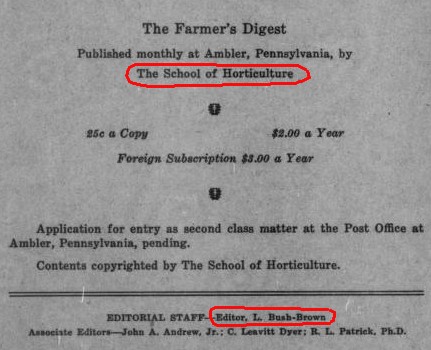
Figure 3. Inside front cover of The Farmer’s Digest from 1937.
The Farmer’s Digest was published monthly and contained a variety of articles that had appeared in various farm magazines. The inaugural issue stated “From more than 200 magazines and bulletins published in this country and abroad, the Editorial Staff of the Famer’s Digest selects articles of outstanding merit and general interest. It is comprehensive in its scope, covering all phrases of Agriculture.”
In 1940 an editorial advisory board was established to provide advice to the publication. This board was comprised of prominent agriculturalists. The first advisory group was comprised of four members with additional members being added over time. In March of 1943 W. T. Spanton, national FFA advisor and Chief of the Agricultural Education Service in the U.S. Office of Education was added to the advisory group. Other members of the advisory group in 1943 were:
- William Albrecht, Chairman, Department of Soils, University of Missouri
- John Beck, Professor of Veterinary Medicine, University of Pennsylvania
- Hugh Bennett, Chief, U.S. Soil Conservation Service
- D. B. Johnstone-Wallace, Assistant Professor of Agronomy, Cornell University
- H. J. Reed, Dean of the College of Agriculture, Purdue University
- Howard Sprague, New Jersey Agricultural Experiment Station
- M. L. Wilson, Director of Extension Work, USDA
In 1943 the Farmer’s Digest sponsored an essay contest for FFA members. The topic was “The FFA’s Contribution to National Defense.” The essays were limited to1,500 words and had to be typed and double spaced. The agriculture teacher was to send a letter with the essay confirming the contestant was a member of the FFA.
The winner of the essay contest (and $35) was Karl Swain of Grandview, Texas. Second place was Robert McFate of Edenburg, Pennsylvania who received $15. There were three honorable mention essays (prize was a one year subscription to the Farmer’s Digest) all from Illinois – Wayne Canterbury (Athens), Keith F. Schertz (Benson) and Orville Sauder (Pekin). You can read Karl’s essay at https://archive.org/details/sim_farmers-digest_august-september-1943_7_4/page/78/mode/2up.
A master’s study (Rafferty, 1954) looking at magazine subscriptions in Montana high school libraries conducted in 1954 found that 10 schools subscribed to the Farmer’s Digest. The most popular agricultural periodicals were (p. 106):
- Country Gentleman – 41
- Farm Journal – 28
- Hoard’s Dairyman – 19
- Montana Farmer Stockman – 16
- American Farm Youth – 15
- Successful Farming – 13
- Farm Quarterly – 13
- Farmer’s Digest -10
- Five other magazines had less than 10 mentions.
The Farmer’s Digest was commonly found in the agricultural classroom. The 1977 Neponset, Illinois High School FFA Officers are pictured in the school yearbook getting new ideas from the Farmer’s Digest.
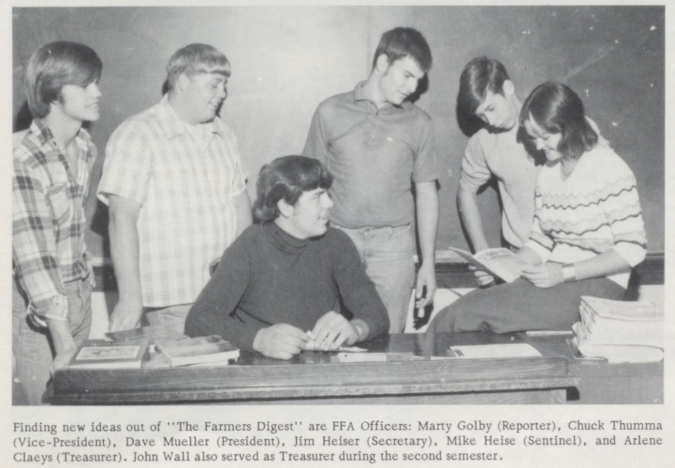
Figure 4. The 1977 Neponset, Illinois High School FFA Officers are pictured in the school yearbook (The Zephyr) getting new ideas from The Farmer’s Digest.
Typically the Farmer’s Digest featured a wide variety of articles but at times they would have an issue focused on a special topic such as corn or beef cattle. Perhaps the students read the Farmers Digest for the jokes. “Fun on the Farm” was a regular feature of the magazine.
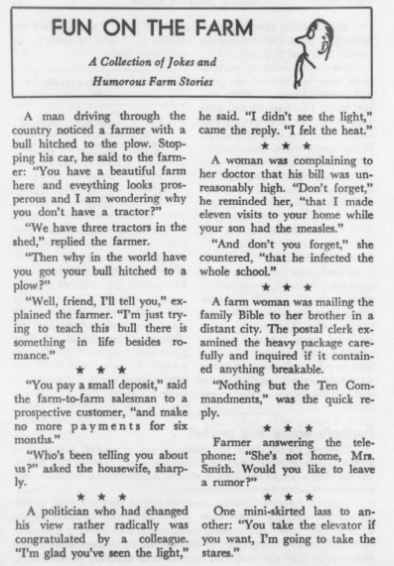
Figure 5. Fun on the Farm from The Farmers Digest, February, 1970
There were often short words of wisdom found in the publication. The November 1965 issue contained the following words of wisdom.
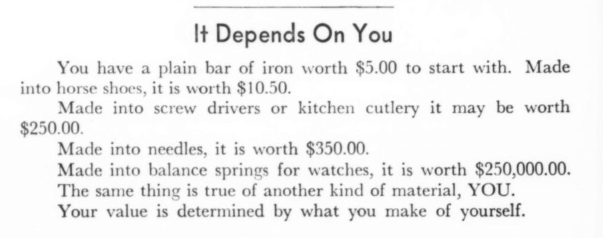
Figure 6. From The Farmer’s Digest, November 1965
Over the decades the ownership of the Farmer’s Digest changed several times. One could look at the various covers of the publication to determine if there was a new publisher. The most recent owner of the publication was the company that publishes the No-Till Farmer magazine. In 2005 the publication ceased to exist.
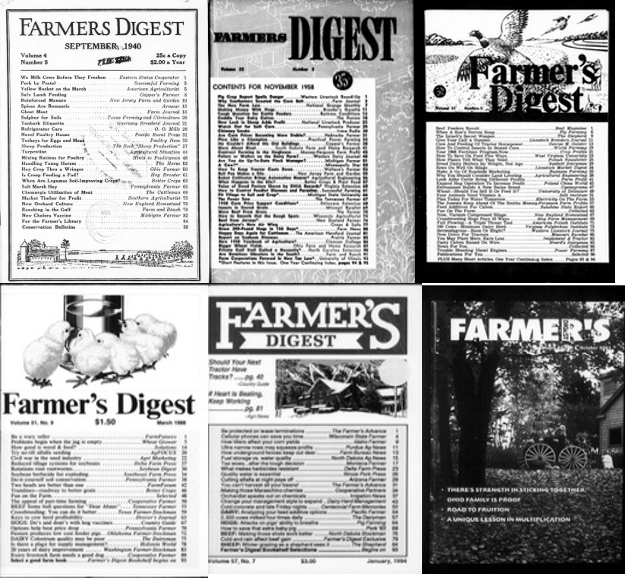
Figure 7. Farmer’s Digest covers in order 1940, 1958, 1967, 1988, 1994, 2003
Concluding Remarks
Times change. Many magazines have gone online or are no longer printed (Playboy, Jet, Money, Family Circle, Ladies Home Journal) and many companies have gone out of business (Sears, Bed, Bath and Beyond, K-Mart, Blockbuster). It is sad to see these go but it is important to be flexible and to adapt to changing times.
Changes have occurred in agriculture as well. Ag chemical companies, seed companies, and technology providers have merged. Successful Farming identified 10 major mergers in 2017. These types of mergers continue. In the world of agriculture we must be willing to embrace new technologies and adapt to change.
During the 1980s agricultural education and the FFA realized changes needed to be made. Overall the changes have been positive. But we must constantly be on the alert and make needed changes. Dolly Parton said, “We cannot direct the wind, but we can adjust the sails.” Have you adjusted your sails recently?
References
contains digitized copies of The Farmer’s Digest
Raffety, Florence (1954). A study of magazines subscribed to by 125 accredited secondary schools of Montana and their library standards. Montana State University.
